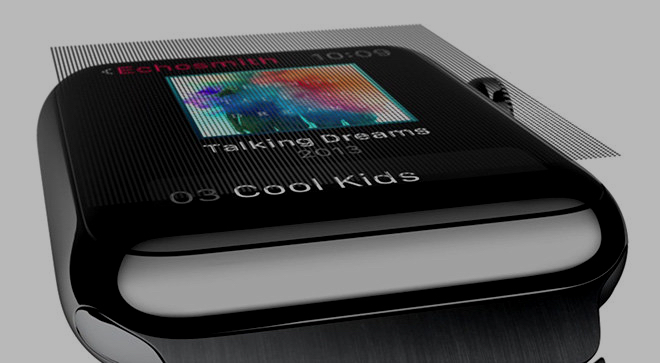
Are Force Touch Context Menus A Real Problem?
There’s no question that the Watch UI is beautiful, but Apple has uncharacteristically fallen short when it comes to making the Watch easy to use. Beyond settings that are far more complex and a steeper learning curve that Apple isn’t doing much to overcome effectively, there’s a big problem with Force Touch that no one seems to be talking about.
There is absolutely nothing in the Apple Watch interface that indicates where Force Touch gestures can be used. Think about how crazy that is.
Yes, that’s just nuts.
Right now, the cursor on my MacBook is actively telling me that if I right-click on my trackpad, I’ll get a menu specifically for the browser window I’m currently using. In Pixelmator, a huge blinking bulb goes off constantly in the corner of the screen to let me know that, at my convenience, I can access a specific submenu for the pen or selection tool I’ve got enabled. On the desktop itself, there is a pervasive note across the top banner indicating that I can right-click below to access shortcuts or make new folders. My Magic Mouse flashes arrows ferociously across its surface any time I can scroll inside a window.
Get real.
Context menus are hardly new, they’re hardly confusing, and they certainly don’t need fixing. They’ve been around for forever, and any hiccup with Apple Watch users unfamiliar with the concept relies not on their lack of awareness that hidden menus exist but on the simple fact that they haven’t wrapped their heads around a clickable screen yet. The BlackBerry Storm wasn’t that popular, after all. “I wonder what this button does” has always been a compelling driver of human action, and once people know that a button is a button, they’re going to press it. Repeatedly. (As for the assertion that “no one seems to be talking about” Force Touch’s capabilities, I present this list of international news coverage on exactly that topic.)
Even iOS has various context-sensitive gestures baked in, and none of those are advertised actively on-screen, either. You can long-hold to enter the app deletion interface, single tap text to bring up editing options, swipe up to access the control panel, hold down the home button to activate Siri, use a volume button as the camera shutter, and so on. Apple has advertised all of these functions in their time, but they’ve done so — in each case — far less actively than they’ve touted Force Touch.
In fact, Apple has advertised the bejeezus out of Force Touch and its context awareness, even hyping its new inclusion in MacBook trackpads. There’s nothing more they can really do beyond making a dedicated TV commercial for the feature, even though it already features prominently in several of the “Films” on the Apple Watch website. (As a side note, I expect just such a commercial to air the very second Apple Music goes live.)
Taking it further, asking that Apple “indicates where Force Touch gestures can be used” is tantamount to asking them to get rid of Force Touch altogether: If there’s a graphic taking up space on the screen to tell you when and where more options are available, it might as well be a tappable toggle. The entire point of Force Touch is to preclude all that in order to maximize the limited real estate that the wearable offers. The bottom line is that Force Touch wouldn’t be useful if it took up any visible space on the display. There might be an accessibility argument for an interactive “Force Touch icon” to be shown on-screen, but that’s about it.
Apple Watch has a lot of interface issues, but Force Touch and its context menus aren’t among them.